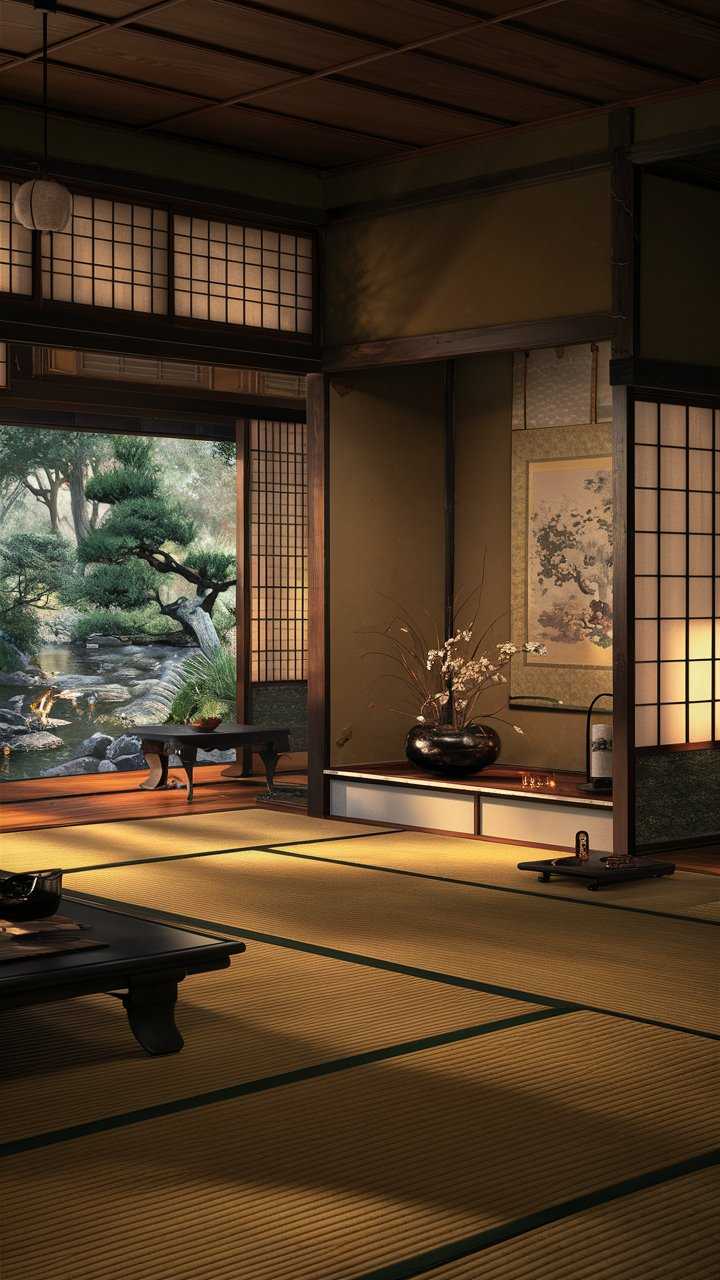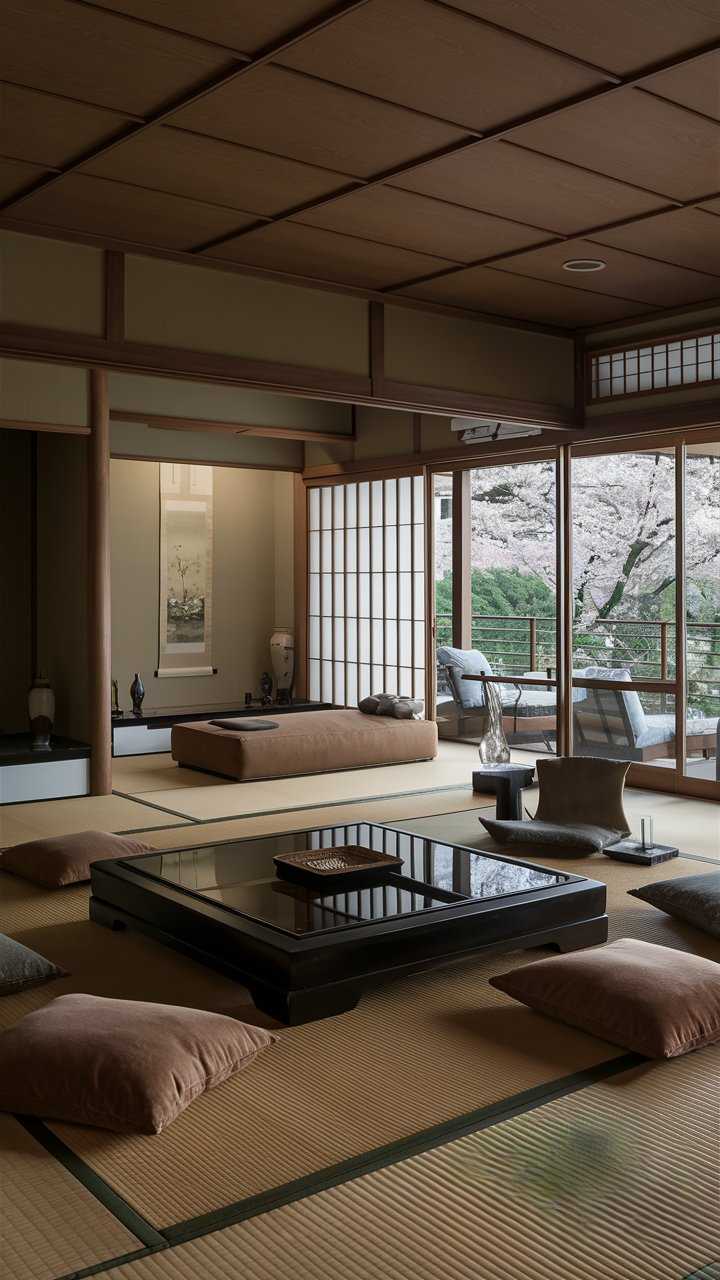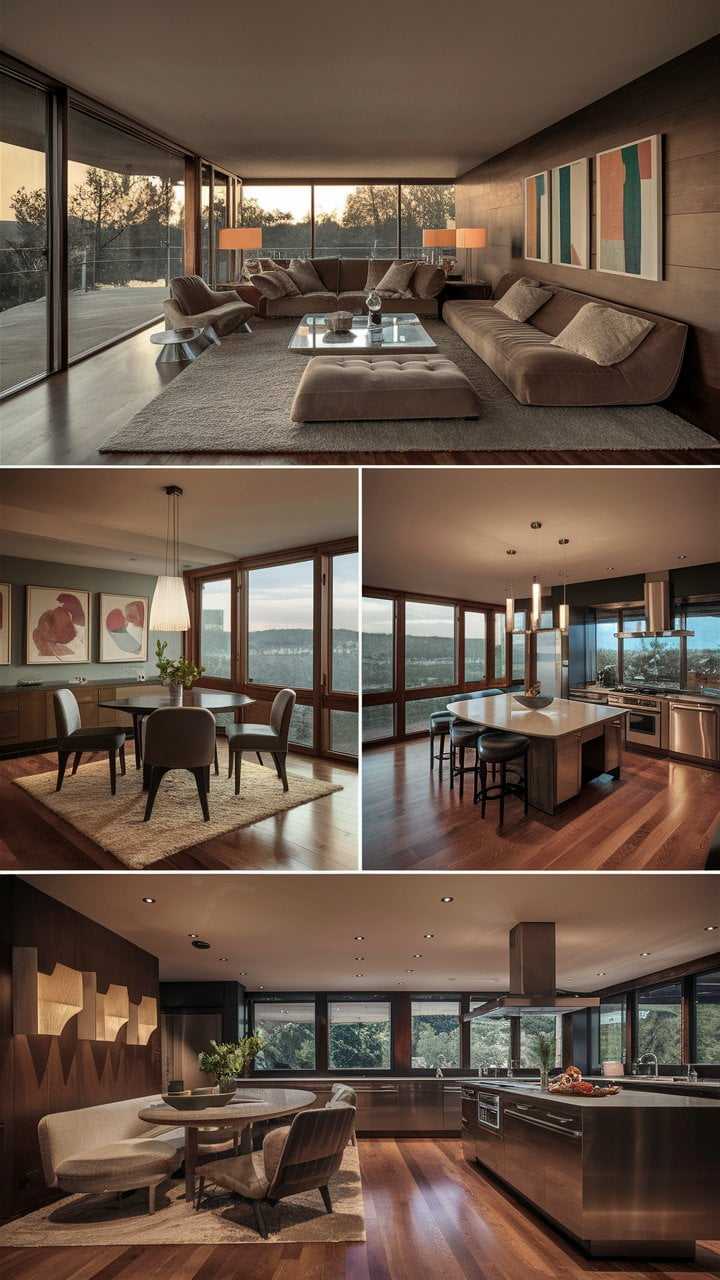Japanese Living Room Background: Serene Zen Designs
The Japanese living room background mixes old and new, creating a peaceful space. It focuses on zen designs for a calm feel. The look is all about simplicity and connecting with nature.
These rooms use soft colors, natural materials, and practical items. They aim to make a space that’s peaceful and mindful. A Japanese-inspired living room is meant to be a quiet escape from everyday stress.
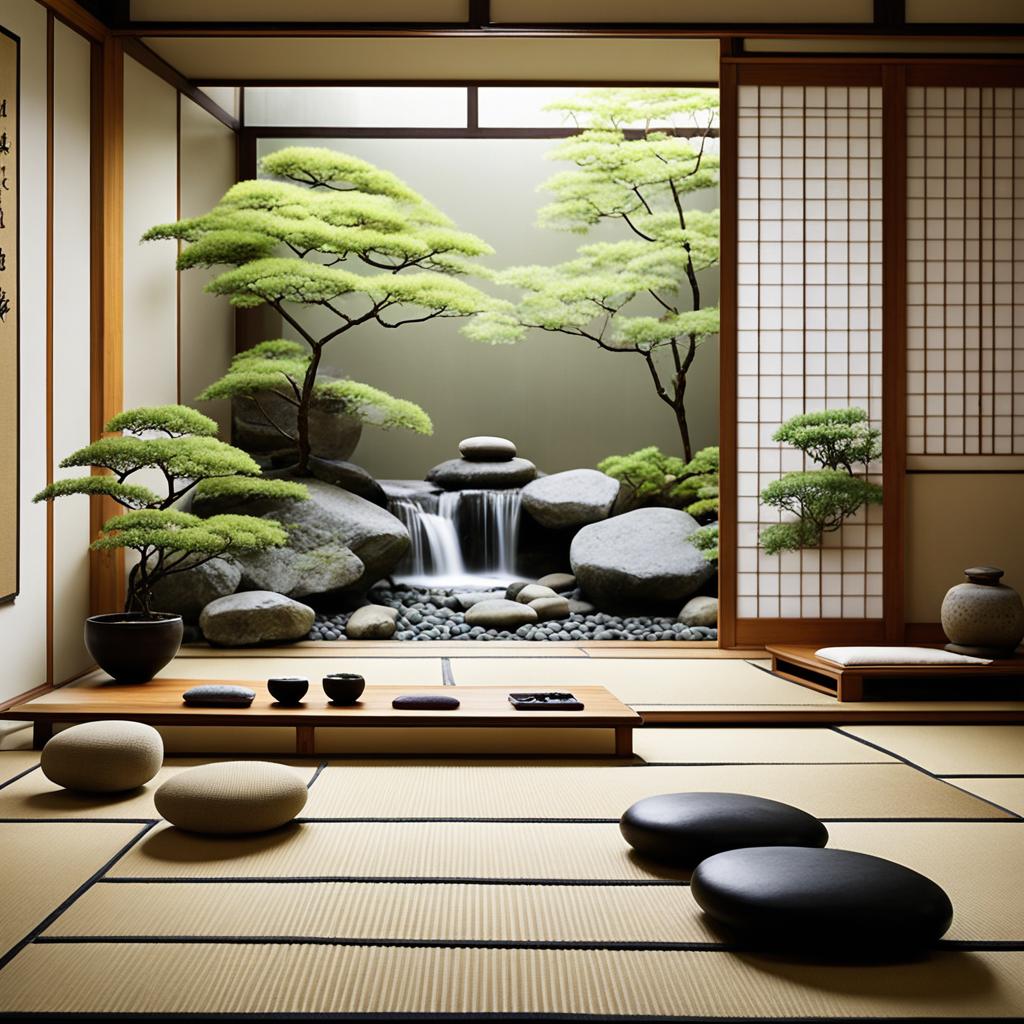
Key Takeaways
- The Japanese living room background promotes tranquility through zen designs.
- Minimalist home aesthetics enhance mindfulness and relaxation.
- Neutral color palettes and natural materials are key elements.
- Serene Japanese decor creates a retreat from daily chaos.
- Functional design encourages a harmonious living space.
The Essence of Japanese Interior Design
Japanese interior design is a mix of beauty and philosophy, deeply rooted in culture. It’s known for wabi-sabi, which finds beauty in imperfections and the fleeting nature of things. Designers use wabi-sabi to celebrate nature’s forms and textures, making spaces calm and serene.
Wabi-Sabi: Embracing Imperfection
Wabi-sabi teaches us to love the raw and simple. It makes interiors where every piece has a story. This style shows the beauty of age and personal touches, linking the space to its people.
Minimalism in Living Spaces
Minimalism is key in Japanese design. It focuses on what’s needed, not what’s extra. This creates calm, simple spaces that encourage peace. These areas let in light and air, making them even more peaceful.
Natural Materials and Their Impact
Natural materials like wood, bamboo, and stone are crucial in Japanese design. They add warmth and make spaces feel welcoming. These materials age beautifully, showing the beauty of time and connecting us to nature.
Understanding Zen Living Spaces
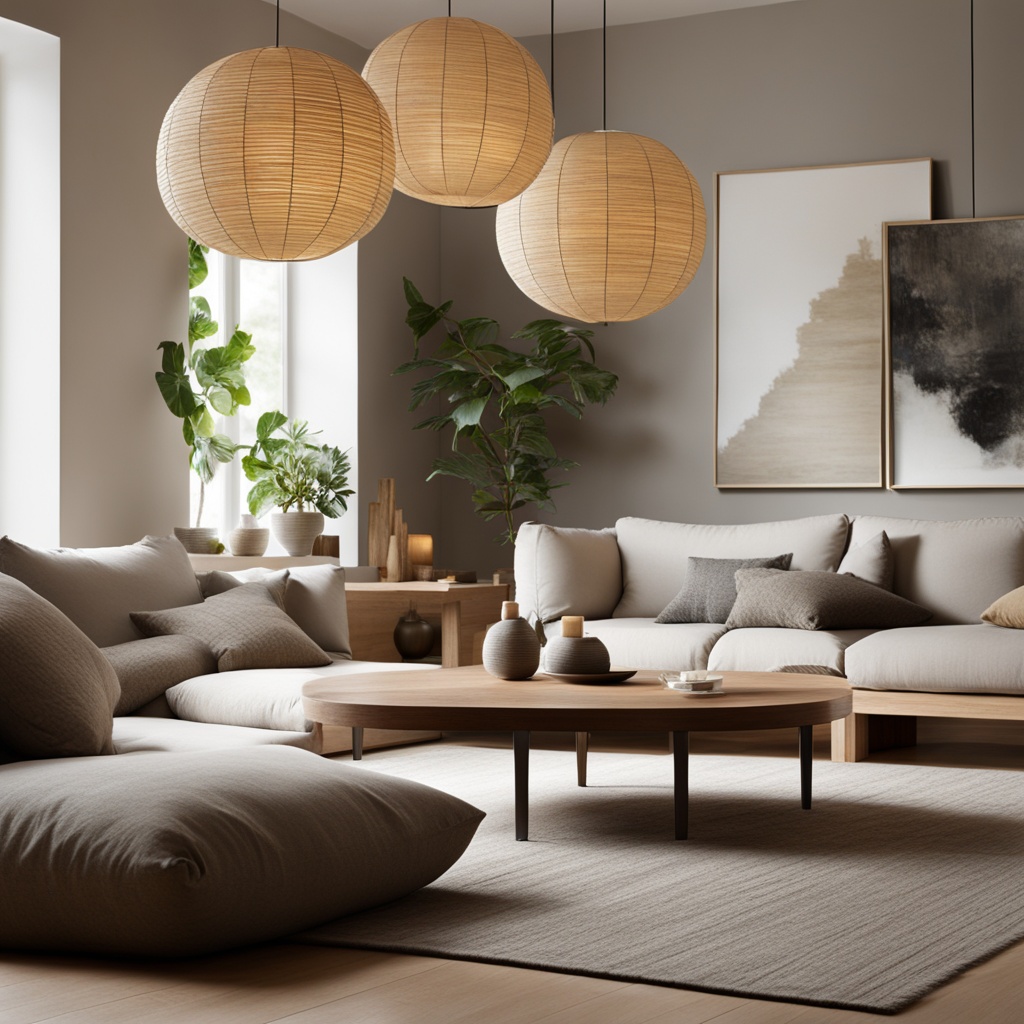
Zen living spaces bring together the key ideas of zen philosophy. These ideas focus on simplicity, being fully present, and living in harmony with your surroundings. They help create spaces that are peaceful, making every part of the room thoughtful, from the layout to the decorations. By adding things that make peace, the aim is to make spaces that help you feel calm and balanced.
Principles of Zen Philosophy
At the heart of zen philosophy are being present and aware. This way of thinking encourages people to live simply and without distractions. In zen living areas, you’ll see clean lines and natural materials, which bring peace. The way furniture and decorations are placed helps create a smooth flow in the space.
Creating Mindful Environments
To make spaces mindful, think about how you use the space. This means:
- Keeping areas tidy to help you relax
- Using soft colors to make the space calm
- Adding natural light to improve mood and health
- Adding things like water features or plants to make the space richer
These steps follow the ideas of Japanese decor, turning living areas into peaceful places for thinking and relaxing.
Japanese Living Room Background: Aesthetic Elements
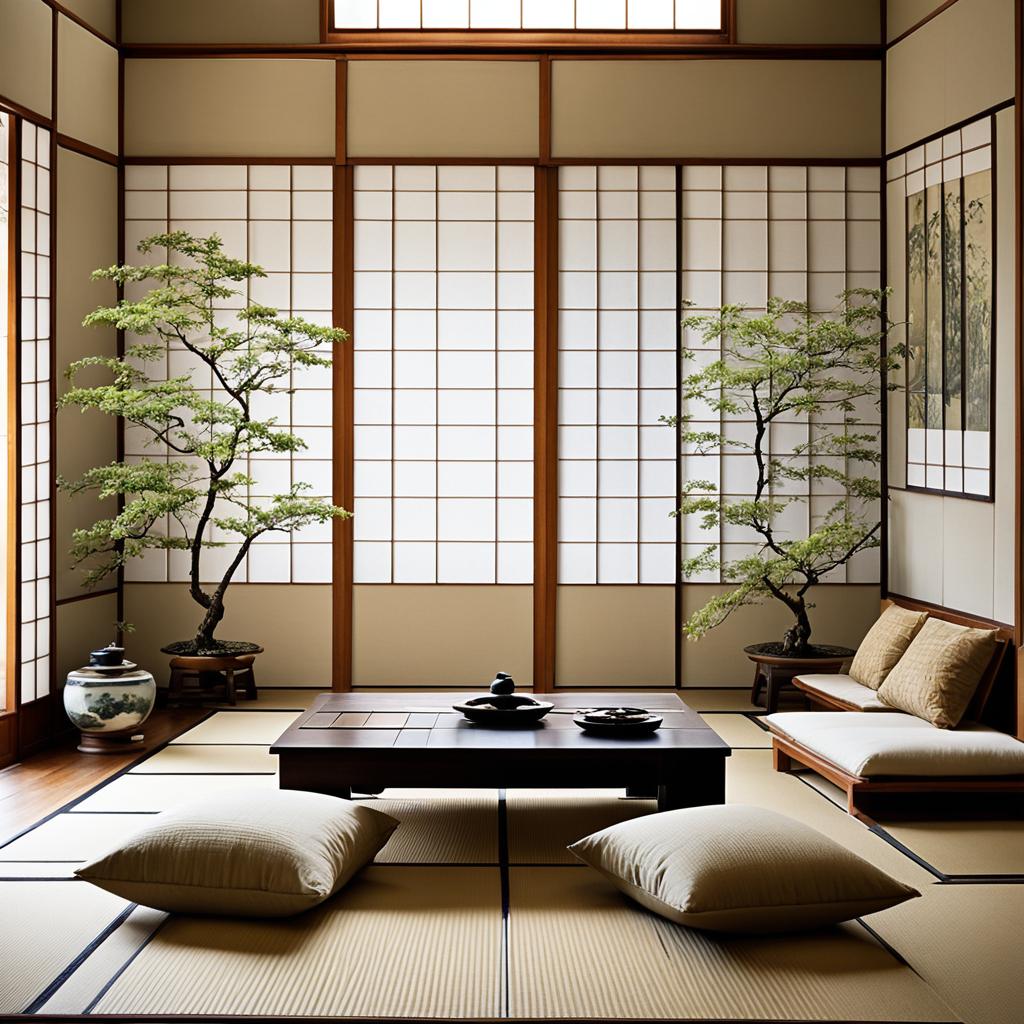
Aesthetic elements are key in making a Japanese living room peaceful and functional. Tatami mats and shoji screens are important for creating a calm space. They add beauty to the room while making it more serene.
Tatami Mats: The Foundation of Serenity
Tatami mats are made from rice straw and are vital for a peaceful room. They bring warmth and comfort, making you want to relax. These mats connect us to nature, showing the value of simplicity in design.
Shoji Screens: Balancing Space and Light
Shoji screens are a stylish way to control light and space. Made from rice paper and wood, they let in soft light while keeping things private. These screens make the room feel magical with their light and shadow play.
Adding soft colors to your decor can make the room even more peaceful. For example, the pink and blue serenity wallpaper works well with natural elements. It creates a calm background for your living space.
Incorporating Nature into Japanese Decor
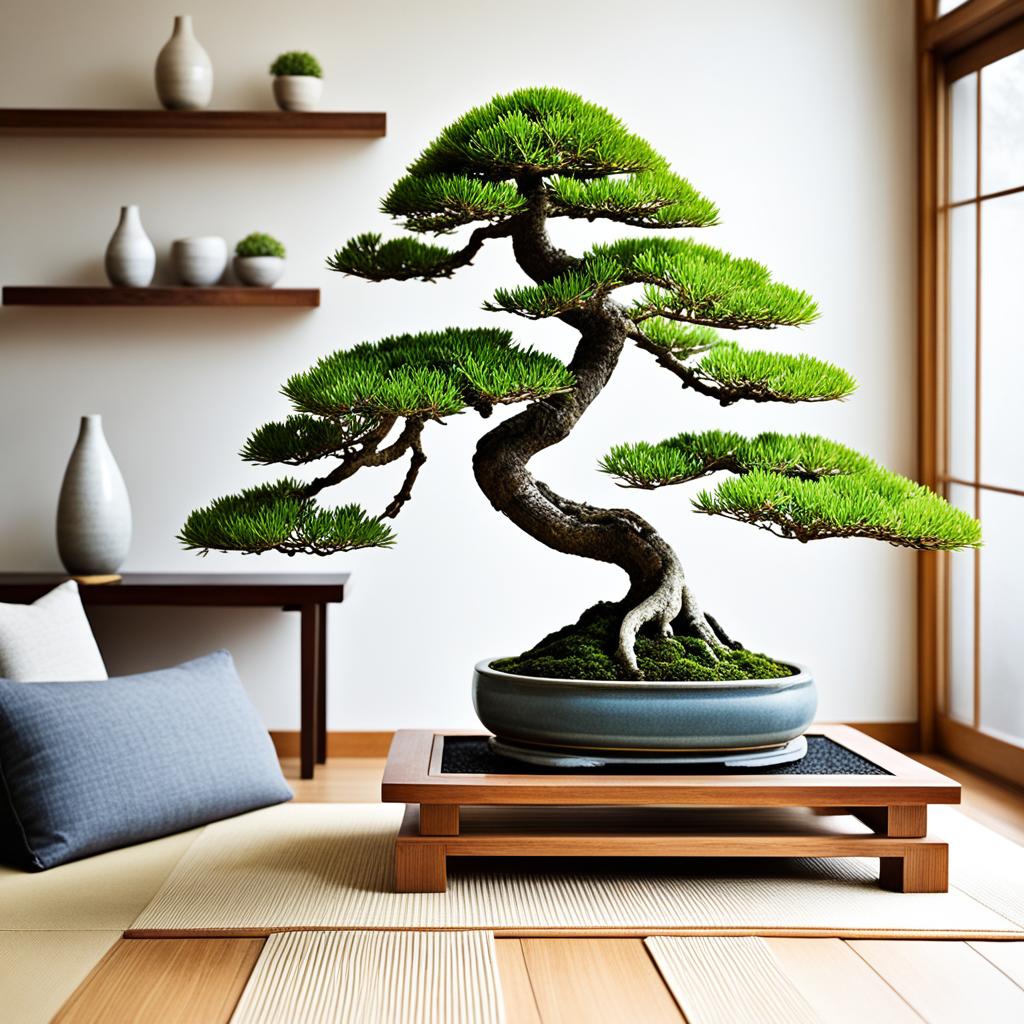
Adding nature to Japanese decor makes spaces feel calm and peaceful. Indoor plants make rooms look beautiful and feel fresh. They grow well inside, improving air quality and making the room look better.
Benefits of Indoor Plants
Indoor plants are more than pretty. They clean the air by taking in toxins and making oxygen. This makes the air cleaner and helps people feel better. Adding plants to your home can make you happier and less stressed, just like in Japanese homes.
Utilizing Bonsai Trees for Tranquility
Bonsai trees are key in Japanese decor, showing strength and the art of patience. These small trees capture nature’s beauty and add depth to any room. They bring calm and encourage being in the moment, making them great for peace. Bonsai trees add to the simple beauty of Japanese style and connect us to nature.
| Indoor Plants | Benefits |
|---|---|
| Snake Plant | Purifies air, requires low light |
| Peace Lily | Improves humidity, removes toxins |
| Fiddle Leaf Fig | Adds design flair, easy maintenance |
| Bonsai Tree | Promotes mindfulness, enhances tranquility |
Color Palettes and Textures in Zen Designs
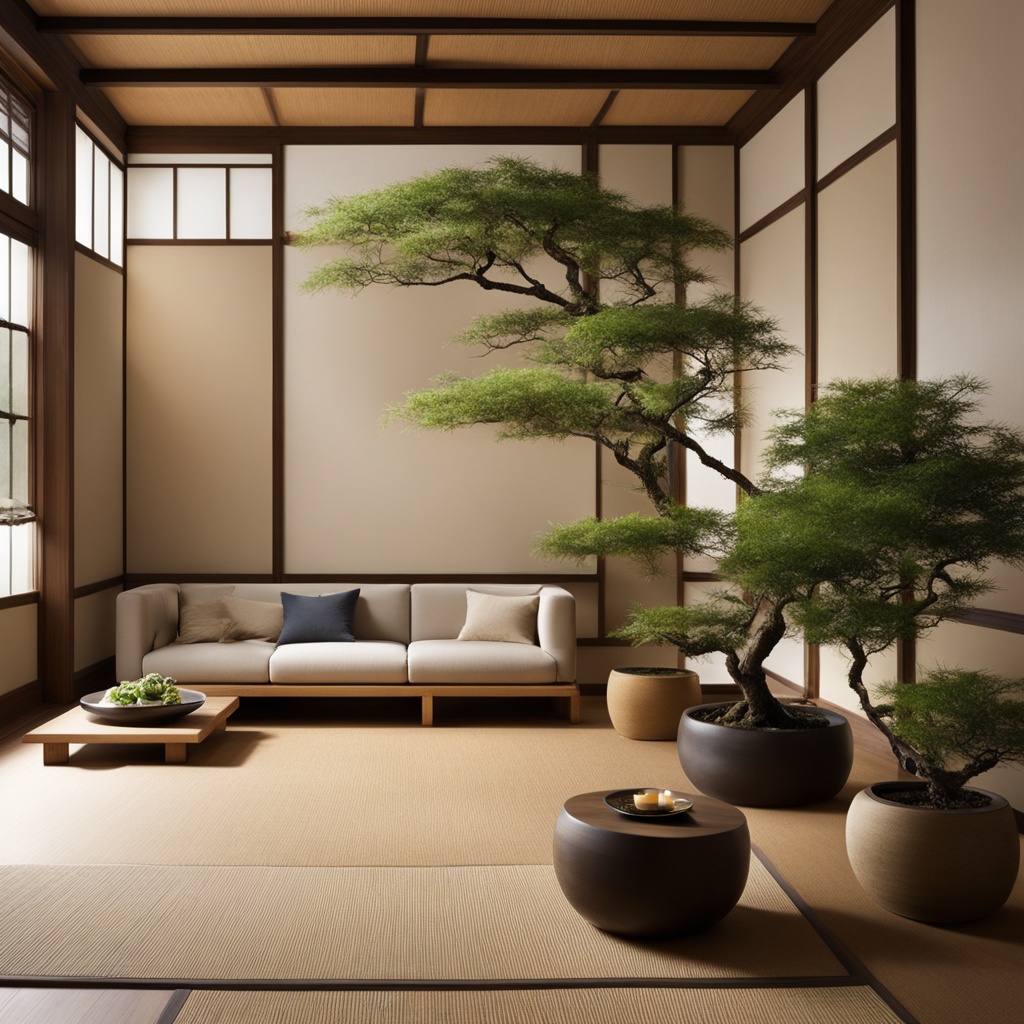
Color palettes play a big role in the feel of a Japanese living room. They use soft colors like whites, grays, and earth tones. These colors help create a calm space, perfect for relaxing.
Textures add to the zen feel too. Using natural materials like wood and stone brings warmth. Soft fabrics like linen add a cozy touch. This mix makes the space feel welcoming and simple, just like Japanese decor.
Choosing the right colors and textures is key to a peaceful space. It shows the beauty of Japanese living rooms.
| Element | Description | Impact on Space |
|---|---|---|
| Color Palettes | Subdued tones such as whites, grays, and earthy shades | Promotes relaxation and a calming effect |
| Textures | Natural materials like wood and stone, soft linen fabrics | Adds warmth and visual interest |
| Design Philosophy | Emphasis on minimalism and nature | Creates an inviting and serene atmosphere |
Functional and Flexible Spaces
Creating a peaceful Japanese living room background means having spaces that are both useful and beautiful. Using multifunctional furniture is key to making the most of your space without it looking messy. Items like low-profile seating and tables that fold up make it easy to switch up the room’s use without losing style.
Multifunctional Furniture Choices
It’s important to pick the right multifunctional furniture for your Japanese living room. Look for pieces that can do more than one thing well. Here are some top picks:
- Storage benches that offer a place to sit and store things underneath.
- Folding tables that can be set up for parties but fold away when not in use.
- Sofa beds that turn from a couch into a bed with ease.
These items help you use your space wisely and keep the room looking minimalist, just like Japanese design likes it.
The Role of Tokonoma Alcoves
Tokonoma alcoves are a big part of what makes Japanese living rooms flexible and beautiful. They’re meant for showing off art or flowers and are a key spot in the room. They add to the room’s look and bring in the idea of balance and harmony.
These alcoves make it easy to change up the room’s look with the seasons. By adding new displays, you can keep your living room feeling fresh and interesting.
Practical Tips for a Minimalist Living Room
Making a minimalist living room means focusing on simplicity and functionality. Start by decluttering to create a calm space that follows Japanese decor. This guide will help you make your living room more unified and meaningful.
Decluttering Your Space
To get started, declutter your living room. Look at each item and keep only what you really need. Here are some steps to follow:
- Start small by focusing on one area, such as a single shelf or a corner.
- Sort items into categories: keep, donate, or discard.
- Limit decorative elements to a few pieces that resonate with you.
- Consider storage solutions that hide away less frequently used items.
Choosing the Right Furniture
After decluttering, pick furniture that fits your minimalist style. Look for pieces that are simple yet elegant:
- Look for furniture with clean lines that do not overwhelm the space.
- Choose natural materials like wood, which enhance the warm feeling of Japanese decor.
- Prioritize multifunctional furniture to maximize space efficiency.
- Consider neutral colors to maintain a calm and soothing environment.
Follow these tips to create a minimalist living room that’s both beautiful and peaceful. Enjoy the journey of turning your space into a reflection of Japanese aesthetics.
Decorative Elements That Enhance Serenity
Adding thoughtful decor to Japanese style spaces makes them peaceful. Ikebana arrangements are key to this. They mix flowers, branches, and leaves for balance and simplicity.
Ikebana Flower Arrangements
Ikebana flower arrangements make spaces calm and beautiful. They pick flowers and branches with care to bring peace. The way they place flowers focuses on simplicity, letting each piece stand out.
Adding Ikebana to your home makes it welcoming for rest and thought. It creates a space that encourages calmness.
Art and Symbolism in Japanese Design
Art is very important in Japanese decor. Traditional and simple artworks tell stories and bring calm. A delicate ink painting or a peaceful landscape can make you think and relax.
Choosing the right art adds depth to your decor. It follows Japanese design’s calm principles.
Decor like Ikebana and meaningful art makes a Japanese living room peaceful. It brings peace and mindfulness into the space.
| Decorative Elements | Purpose | Impact on Serenity |
|---|---|---|
| Ikebana Arrangements | Showcases balance and simplicity | Promotes tranquility through nature |
| Traditional Art Pieces | Evokes storytelling and culture | Invites reflection and calmness |
| Minimalist Designs | Encourages openness and clarity | Enhances peacefulness in space |
Conclusion
The Japanese living room background creates a peaceful oasis. It blends zen designs with minimalist aesthetics. Using natural elements like wood and stone, it sets up a calm space for relaxation and mindfulness.
Choosing the right colors and decor boosts the look and feel. This makes the room more harmonious and balanced.
Japanese interior design brings a nurturing space that boosts well-being and connects us to nature. Tatami mats, shoji screens, and indoor plants all add to the peace. These elements help create a simple and tranquil living space.
Creating a Japanese living room is more than just about looks. It’s about living a mindful and peaceful life. By adding zen designs to our homes, we make them into peaceful retreats.
FAQ
What are the key characteristics of a Japanese living room background?
How does wabi-sabi influence Japanese interior design?
What role do tatami mats play in a Japanese living room?
Why are shoji screens an important feature in Japanese decor?
How can I incorporate nature into my Japanese living room?
What color palettes are commonly used in Japanese living rooms?
How does multifunctional furniture contribute to Japanese interior design?
What are some practical tips for achieving a minimalist living room?
How can decorative elements enhance the serenity of a Japanese living room?
Source Links
- https://www.pinterest.com/pin/how-to-create-a-tranquil-japanese-living-room-design-333-art-images–164170348908476734/
- https://www.2modern.com/blogs/modern-how-to/japanese-interior-design-concepts-for-creating-a-zen-inspired-living-room
- https://www.pinterest.com/pin/zen-japanese-interior-design-in-2023–590956782375447328/
